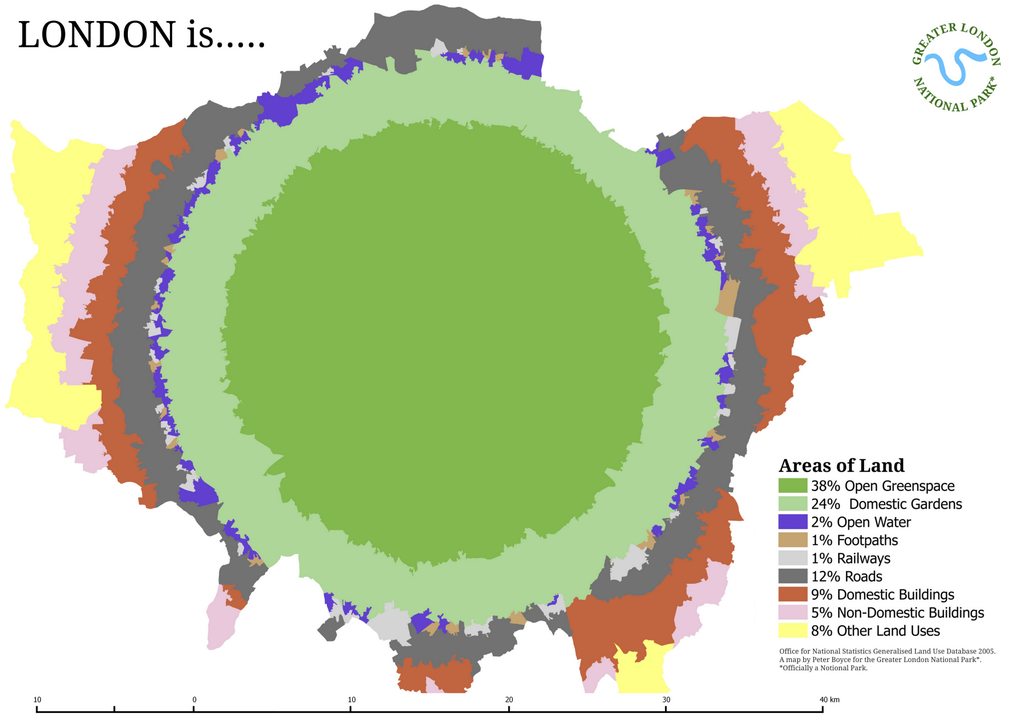

Most cities are forests of metal and plastic. In a majority of Earth’s major metropolises, there is little green to be found. Instead, gray pavements line the streets and soaring sky scrapers reach towards the clouds. While this may be the dreamscape of many major science fiction authors, or those who love the bluster and flurry of modern culture, it is a horror filled nightmare for individuals invested in sustainability and ecology. Cities create massive amounts of light pollution, which wreaks havoc with local animal populations. Cities destroy habitats by leveling trees and contaminating water supplies. The extreme population density that is typically found in cities results in massive amounts of soil, air, and water pollution.
For many, many reasons, cities are not a good thing.
However, there are certain individuals and governments that are working to change the troubling trend that is the modern city. The above graph represents the amount of land in London that is consumed by buildings and roadways, and also shows the amount of land devoted to parks and green spaces. If you look at this visualization of green space and gardens in London, you’ll see that this buzzing metropolis contains more plants and wildlife than buildings. This image represents the value that governing bodies in London (and Londoners in general) place on green spaces, and the image was created as part of a campaign to ensure that the local government work to preserve the city’s green spaces and promote natural diversity alongside the city’s cultural diversity. The campaign asserts:
London is an incredibly diverse place. 8.3 million humans speaking 300 languages share the city with 13,000 wild species as well as lots of cats and dogs. You may be excused of thinking there was not much space for all these Londoners, but 60% of London is open land and 47% of Greater London is green. As well as the 3,000 parks, 142 local nature reserves, 36 sites of special scientific interest, 4 UNESCO World Heritage Sites and 2 National Nature Reserves within the city’s limits, there are 3.8 million private gardens. For its size, London is one of the very greenest cities in the world – something to celebrate …
The Greater London National Park would be a new kind park, a ‘National Park City’ that would aim to conserve London’s awesome ability to be dynamic, innovate and evolve. The Park’s leadership role would be to inform and inspire best practice, help better to co-ordinate and promote London’s biodiversity and recreational opportunities.
A Greater London National Park is an idea that thousands of us could get behind to improve our communities, wildlife and habitats.
You can read the full petition, and contribute your voice to the cause, at: Let’s make London the world’s first National Park City
